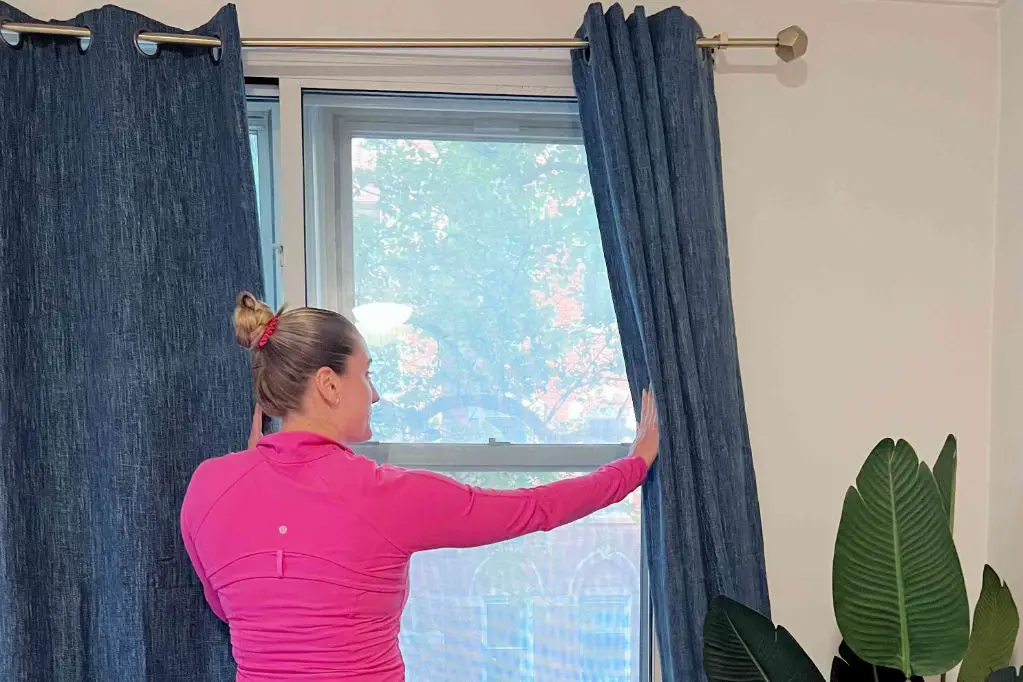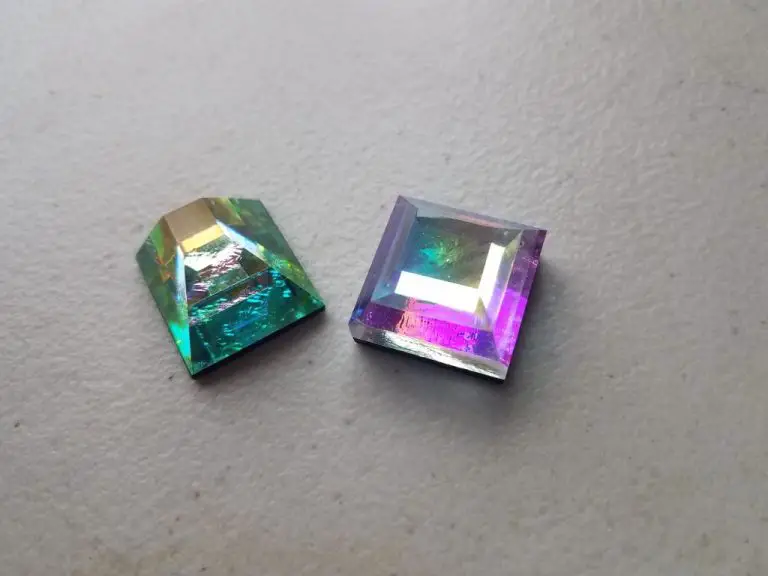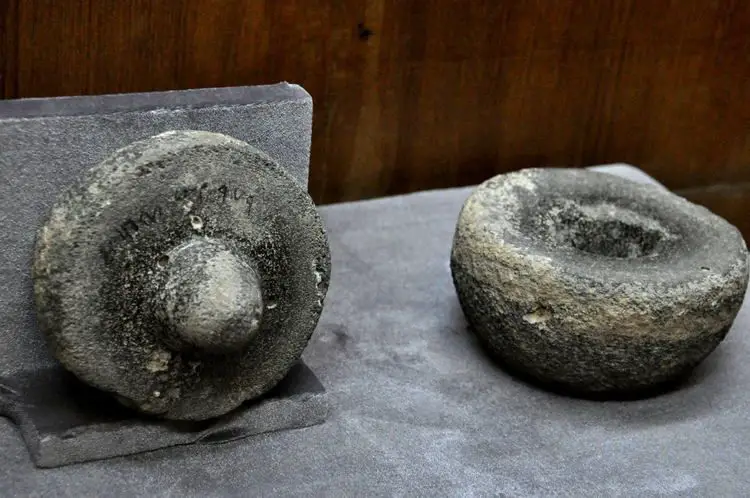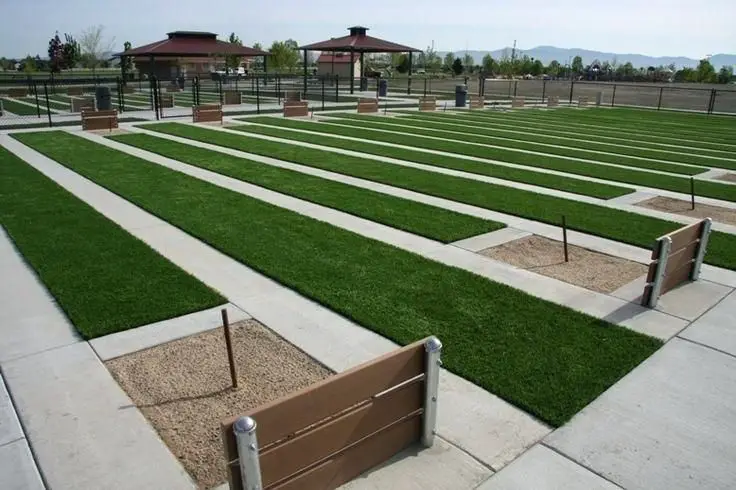What Is The Downside Of Blackout Curtains?
Light Deprivation
Blackout curtains dramatically reduce natural light exposure, which can disrupt your body’s circadian rhythms and internal clock. According to a study published in the journal Sleep Medicine, blocking out sunlight with blackout curtains has been associated with poor sleep quality and mood disorders (source).
Light exposure plays an important role in regulating your sleep-wake cycles. Reduced light exposure from blackout curtains can lead to circadian misalignment, meaning your internal clock is out of sync with the external day-night cycle. This circadian disruption may negatively impact sleep and increase the risk of depression (source).
While blackout curtains can help limit light when you need to sleep, experts recommend allowing ample natural light exposure during the day to maintain healthy circadian rhythms. Relying solely on blackout curtains for extended periods may interfere with your body’s internal clock and have unintended consequences on mood and sleep quality.
Hazardous Materials
Some blackout curtains contain hazardous materials such as vinyl, PVC, and formaldehyde that can off-gas toxic chemicals into the air in your home. The synthetic fabrics used to make many blackout curtains, such as polyester and nylon, can release volatile organic compounds (VOCs) over time, especially when new.
VOCs contribute to indoor air pollution and have been associated with health issues like eye, nose and throat irritation, headaches, loss of coordination, nausea, and damage to the liver, kidney and central nervous system (source).
Specifically, the vinyl and PVC used in some blackout curtains contain phthalates, which are classified as endocrine disruptors and have been linked to developmental, reproductive, and neurological damage (source). Formaldehyde is also a known human carcinogen.
Seeking out eco-friendly blackout curtains made from natural, non-toxic materials can help avoid exposure to hazardous chemicals in the home.
Energy Use
Blackout curtains can actually increase energy costs and reduce energy efficiency in some ways:
They prevent solar heat gains in winter, which means your heating system has to work harder to warm up the house (https://home.howstuffworks.com). Keeping the curtains closed all the time in winter can significantly raise heating bills.
Very dark curtains also increase the need for artificial lighting during the daytime. Even on cloudy days, uncovered windows allow for some natural daylight to brighten up a room. With blackout curtains closed, you may end up turning on more lamps and overhead lights (https://www.amazon.com).
By blocking sunlight and retaining heat, blackout curtains force your air conditioner to work harder in summer. Closed blackout curtains can substantially increase cooling costs compared to lightweight curtains or blinds.
Fire Safety
Blackout curtains can pose a fire hazard due to the materials they are often made from. Many blackout curtains contain synthetic fabrics like polyester that are highly flammable. Thick, multilayered blackout curtains with insulation or backing can quickly catch fire and enable the flames to rapidly spread.

Blackout curtain fabrics like polyester and foam backings produce toxic fumes and smoke when burned. Curtains covering windows could potentially block people from seeing lit exit signs during a fire. The curtains can also conceal smoke and fire until it is too late for residents to safely evacuate.
According to the Yorkshire Fabric Shop, curtains placed near open flames can easily catch fire if they are long enough to be heated by the flames. Polyester blackout curtains are especially dangerous near fireplaces, candles, or other ignition sources.
To reduce the fire risk, it’s important to choose blackout curtains made from natural, flame-resistant fabrics like cotton. Avoid curtains with polyester billows or heavy insulating linings. Make sure exits remain visible and accessible. Take proper fire safety precautions when using candles or operating heaters or fireplaces near windows covered in curtains.
Mold & Mildew
Blackout curtains can block ventilation and cause moisture buildup which promotes mold growth (Wayfair). The dark, enclosed environment behind blackout curtains provides an ideal breeding ground for mold and mildew. Mold spores thrive in warm, humid, stagnant air, which is exactly the type of microclimate created behind tightly-drawn blackout curtains. Over time, mold colonies can develop which pose health hazards to household occupants. Mold release mycotoxins and microbial volatile organic compounds which can cause respiratory irritation, allergic reactions, asthma attacks, and other health problems especially in children and the elderly. To prevent mold, it’s important to regularly air out rooms with blackout curtains by opening windows and allowing fresh air to circulate behind the curtains. Also wash blackout curtains frequently and use mold killing products to disinfect them. Choosing moisture-resistant, mildew-resistant or antimicrobial blackout curtains can also help prevent mold growth.
Aesthetics
While blackout curtains can help reduce light coming into a room, they can negatively impact the aesthetics and ambiance of a space. Blackout curtains often look heavy and dark, which can create a somewhat depressing mood in a room (Decorative Blackout Curtains). The thick, opaque fabric blocks out natural light, preventing a light and airy feeling. This can make a room seem dark and enclosed, like a “cave” (Blackout Curtains). The dark colors and heaviness of blackout curtains may not suit some home designs or decor styles that aim for an open, welcoming vibe.
Difficult Cleaning
Blackout curtains attract a lot of dust and dirt due to their heavy, opaque fabric. Unlike lighter curtains, dirt and debris is not as easy to spot or remove from blackout curtains. Stains can be very difficult to lift from the thick fabric without vigorous scrubbing. According to Sleep Out Curtains, special care needs to be taken when cleaning blackout curtains:
“You will need a clean, white cloth, warm water, and a mild detergent – it is best to use a mild, non-abrasive cleaning solution specifically formulated for curtains and draperies.” (Source)
The opaque, heavy material can be difficult to thoroughly clean. Gentle yet persistent scrubbing may be required to remove set in stains without damaging the fabric. Blackout curtains tend to attract more dust and require more frequent and careful cleaning than regular curtains.
Expense
Blackout curtains tend to be more costly than regular curtains. At retailers like Walmart, blackout curtains can cost $20-$150 for a single panel depending on the size, material, and style (source). Custom or made-to-measure blackout curtains from specialty retailers like Two Pages and Half Price Drapes can cost even more, from $50-$500 per panel (source, source).
The light-blocking materials and layered construction of blackout curtains make them more expensive to produce and purchase compared to regular curtains. Additionally, blackout curtains often require professional installation to ensure proper light blocking and an attractive appearance, adding to the overall cost.
Limited Uses
One downside of blackout curtains is that they have limited uses. Blackout curtains are designed for a single purpose – to block out light. Unlike some other types of curtains that can provide insulation or decoration, blackout curtains only function to create darkness in a room.
Blackout curtains are not multifunctional. They typically consist of tightly woven, opaque fabric that does not let light pass through. While effective at blocking light, the dense weave and dark colors of blackout curtains do not lend themselves well to decoration or adding aesthetic appeal to a room. Blackout curtains also provide little to no insulation value, unlike some lightweight curtains that can help retain heat in a room during colder months.
So for those seeking curtains that can serve multiple purposes like decoration, insulation, or adjustable light filtering, blackout curtains may be too limited in function. Their sole purpose is depriving a room of natural light, which reduces their versatility in many household settings.
Alternatives
Instead of full blackout curtains, there are several alternative options that still allow you to darken a room during daylight hours without some of the downsides of traditional blackout curtains. Some common alternatives include:
Room Darkening Shades
An alternative to blackout curtains are room darkening shades or blinds. These are made of a thick, opaque material that still allows some light to filter in. While not completely blacking out the light, room darkening shades significantly reduce the amount of light coming in, darkening the room. They can be raised or lowered as needed.
Blackout Blinds
Blackout blinds are another alternative that block external light more completely than traditional curtains. They are made of tightly-woven, thick fabrics and can be raised or lowered with a cord. Blackout blinds don’t have the light gaps that curtains sometimes do.
[1]
Light Blocking Film
Applying special light blocking window films is a DIY-friendly option. These vinyl films stick directly to windows and glass doors to block out light. They are transparent from the inside but prevent light from entering the room. Light blocking films can be easily removed.
[1]





